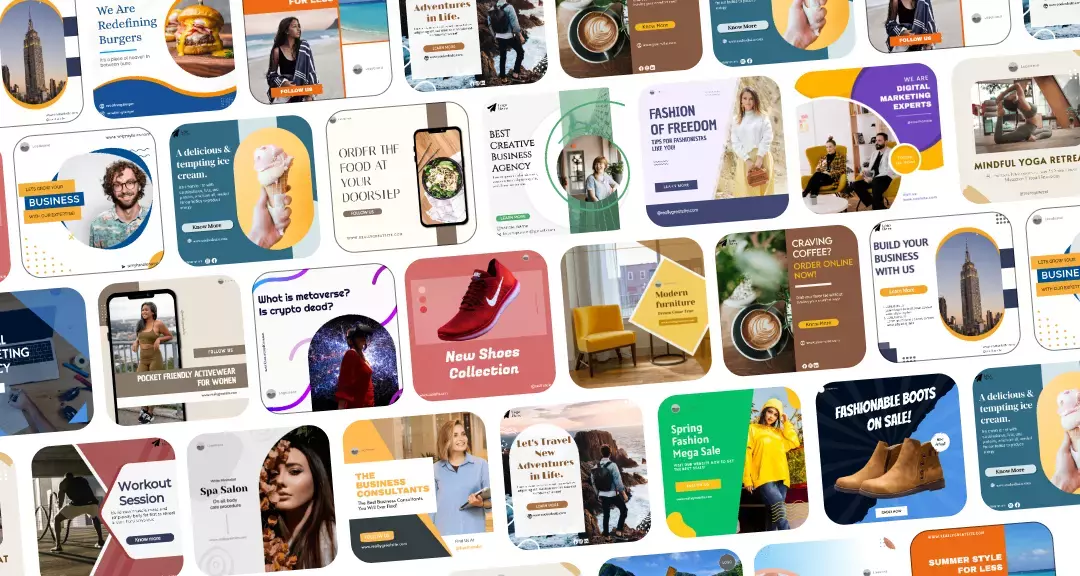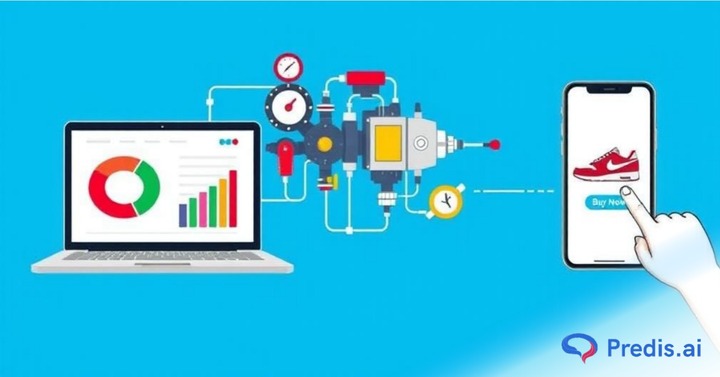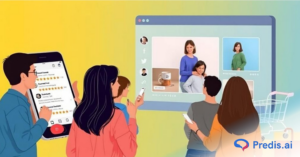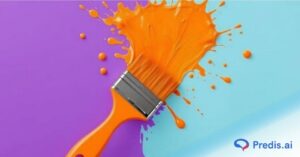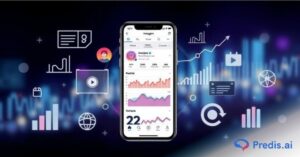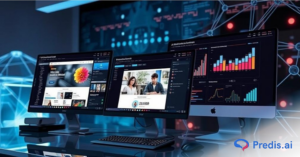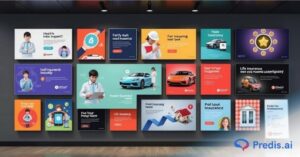Programmatic advertising has become the engine behind most digital ad spending today. Instead of manually negotiating ad placements, marketers now rely on automated systems that buy and sell inventory in milliseconds matching the right ad with the right audience at the right time.
Here’s where things get interesting: artificial intelligence (AI) has taken that automation to an entirely new level. It’s no longer just about bidding faster; it’s about predicting intent, analyzing behavior, and optimizing creatives on the fly. AI tools now make programmatic advertising smarter, leaner, and more profitable.
In the simplest terms, these tools use machine learning algorithms to process millions of data points from browsing patterns to device types and adjust campaigns dynamically. The result? Ads that actually reach people who are ready to engage or buy, rather than wasting impressions on audiences that won’t convert.
And the numbers back it up. According to Statista, nearly 88% of all digital display ad spending will be programmatic by 2026, largely because AI is making these systems more efficient than ever.
In this guide, we’ll explore the best AI tools for programmatic advertising the platforms driving better ROI, smarter targeting, and real-time campaign optimization. You’ll see how each one works, where they fit in your ad strategy, and how brands are already using them to stay ahead of the curve.
Let’s break it down.
TL;DR 🖋
Programmatic advertising has moved far beyond human-led optimization. Today, AI drives smarter bidding, sharper targeting, and higher ROI — all with less manual effort. But with dozens of tools claiming “AI-powered” capabilities, which ones actually deliver?
Top AI Tools for Programmatic Advertising:
- The Trade Desk – Real-time bidding insights and precision targeting
- Adobe Advertising Cloud – Cross-channel automation and predictive analytics
- Google DV360 – Deep data integrations and advanced optimization
- Albert – Fully autonomous ad management platform
- Quantcast – AI-driven audience modeling and forecasting
- Choozle – Simplified DSP with smart automation for SMBs
- AdRoll – AI-based personalization and retargeting
What Makes AI Critical in Programmatic Media Buying?
At its core, programmatic advertising is about automation — but AI gives that automation intelligence. Instead of simply executing bids faster than a human could, AI learns which impressions are worth bidding on, when to bid, and how much to spend to get the best result.
Machine learning models analyze behavioral data — clicks, dwell time, purchase history, and even contextual signals like time of day or device type — to predict user intent. These insights help advertisers reach the right audience before competitors even notice the opportunity.
According to McKinsey, companies using AI-driven targeting in ad campaigns can see up to a 30% improvement in ROI compared to traditional methods. That’s the difference between running ads and running smart ads.
AI also enables continuous optimization. Algorithms adjust bids and placements in real-time, learning from performance data as it comes in. Every impression feeds the model, refining future predictions and maximizing efficiency over time.
Key Advantages of Using AI for Advertisers
- Precision Targeting: AI identifies micro-segments based on intent and behavior, not just demographics. It understands why users act, not just who they are.
- Smarter Bidding: Real-time data lets algorithms adjust bids instantly, cutting wasted spend and focusing budgets on high-performing placements.
- Dynamic Optimization: AI automatically tests and tweaks creatives, messaging, and calls-to-action for each audience cluster.
- Speed and Scale: What once took hours of manual analysis now happens in seconds — across millions of impressions.
- Better Forecasting: Predictive analytics helps marketers forecast campaign outcomes before launching, saving both time and budget.
Example: How AI Transformed a Mid-Sized Brand’s Ad Strategy
Take a DTC skincare brand that switched from manual optimization to an AI-powered demand-side platform (DSP). Before the change, their cost per acquisition (CPA) hovered around $42. After three months of using predictive bidding and audience modeling, CPA dropped to $28 — a 33% reduction — while overall conversions jumped by 40%.
What made the difference? The AI learned which user behaviors most often preceded a purchase and automatically reallocated budget toward similar audiences. That’s optimization no human team could execute at scale.
Top AI Tools Powering Programmatic Advertising in 2025
The AI-driven programmatic landscape has evolved fast. What used to be a handful of specialized DSPs is now a crowded marketplace of platforms using advanced algorithms, predictive modeling, and machine learning to outsmart the competition.
Below are some of the most effective AI tools for programmatic advertising — each with unique strengths depending on your business scale, ad budget, and channel focus.
1. The Trade Desk — Advanced Data and Predictive Optimization
The Trade Desk remains one of the most dominant forces in the programmatic world. Its proprietary AI engine, Koa, analyzes massive data sets across channels — display, video, audio, and connected TV — to guide smarter bidding decisions.
- Core strength: Predictive modeling and data-driven forecasting that adapts in real time.
- Koa’s capabilities: It learns from billions of impressions daily, automatically identifying the most effective combinations of audiences, devices, and contexts.
- Enterprise-ready: Integrates seamlessly with large-scale brand and agency operations, making it ideal for global advertisers.
According to eMarketer, The Trade Desk controls over 10% of global programmatic ad spend, underscoring its widespread adoption.
Case Example:
A major retail brand used Koa’s predictive optimization to refine its cross-channel campaigns. Within 60 days, conversion rates improved by 27%, while cost per acquisition dropped 22% — without increasing budget.
2. Google Display & Video 360 (DV360)
As part of Google Marketing Platform, DV360 gives advertisers unified control over campaign planning, creative, and analytics. Its AI engine powers automated bidding, creative testing, and real-time audience targeting.
- Why it stands out: Tight integration with Google Analytics 4 (GA4) and Campaign Manager 360, enabling deep cross-channel attribution.
- Smart Bidding: Uses Google’s machine learning models to optimize impressions across devices and formats.
- Transparency: Offers detailed insights into impression-level performance and viewability metrics.
Stat: Google processes over 70% of global display impressions, making DV360 an indispensable AI-driven ad platform for scale and reach.
Ideal for: Large enterprises, agencies, and brands already invested in the Google ecosystem.
3. Adobe Advertising Cloud — Unified AI and Cross-Channel Intelligence
Built on Adobe Sensei, the company’s proprietary AI framework, Adobe Advertising Cloud connects programmatic, search, social, and TV advertising under one roof.
- AI Strength: Sensei identifies high-performing audiences and predicts optimal bids across channels.
- Creative Testing: Automated A/B testing for messaging and visuals.
- Forecasting: Predictive models for ROAS, reach, and conversion potential.
A recent Adobe study found AI-optimized campaigns delivered up to 25% higher ROI compared to rule-based optimization.
Example: A financial services company used Adobe’s AI-powered forecasting to anticipate seasonal demand spikes, improving ad efficiency by 18%.
4. StackAdapt — Contextual and Native Ad Intelligence
StackAdapt is a self-serve DSP designed for growth marketers and mid-sized businesses that want high-level AI without enterprise complexity.
- Key AI Features: Contextual targeting, conversion modeling, and dynamic creative optimization (DCO).
- Cross-Channel Reach: Supports native, display, video, and connected TV ads.
- Ease of Use: Intuitive dashboard with transparent reporting and budget control.
StackAdapt’s machine learning algorithms continuously analyze context, not just audience demographics, helping brands reach users in the right mindset.
Example: A SaaS company used StackAdapt’s contextual AI to target users reading about automation tools — cutting acquisition costs by 20% while doubling lead volume.
5. Quantcast — Predictive Audience Modeling at Scale
Quantcast’s Ara AI Engine is purpose-built for real-time audience understanding. It analyzes billions of web signals daily to identify intent, measure incremental lift, and forecast outcomes.
- Data Strength: Uses first-party behavioral data to model lookalike audiences.
- Predictive Insights: Anticipates which audiences will convert before they even enter the funnel.
- Brand Safety: Built-in mechanisms for fraud detection and compliance.
Stat: Quantcast data spans over 100 million web destinations, making it one of the most data-rich AI tools in the ad ecosystem.
Case Example:
A mid-sized eCommerce brand used Quantcast’s predictive audience insights to scale campaigns across North America, resulting in a 38% boost in ROAS and a 25% drop in wasted impressions.
How AI Enhances Every Stage of the Programmatic Advertising Funnel
AI doesn’t just make bidding smarter — it transforms the entire funnel. From discovering audiences to analyzing results, every phase of programmatic advertising now runs on intelligent automation. Let’s break down how AI enhances each stage.
Audience Discovery and Segmentation
Before AI, audience segmentation was mostly demographic — age, gender, location. Now it’s intent-driven.
AI tools analyze behavioral signals (what users browse, search, or buy), contextual data (content they consume), and engagement history to predict who’s most likely to act.
- Machine learning clusters audiences into micro-segments based on behavioral similarities.
- Predictive models forecast which groups will generate the highest conversions.
- AI integrates first-party and third-party data to refine lookalike audiences.
Example:
A travel brand used The Trade Desk’s AI modeling to segment “adventure-seekers” — users who read hiking blogs, viewed mountain gear, and searched flight deals. Conversions rose 31% within three weeks.
Stat: Research from Salesforce shows AI-based segmentation can increase campaign engagement by up to 40%.
Real-Time Bidding and Optimization
AI has redefined how bidding happens. It no longer follows static rules — it learns and adapts in real time.
- Algorithms evaluate each impression in milliseconds, weighing factors like user value, time, and device.
- Predictive bidding models adjust spend automatically based on likelihood of conversion.
- Continuous feedback loops improve efficiency as campaigns progress.
Stat: According to Deloitte, AI-powered bidding can reduce cost per click (CPC) by 20–25% compared to manual methods.
AI’s speed and precision mean you spend less on irrelevant impressions and more where it actually counts.
Creative Personalization
Creative optimization is where AI adds a distinctly human-like touch — at scale.
Using Dynamic Creative Optimization (DCO), AI tools test thousands of ad variations simultaneously. They identify which visuals, headlines, and CTAs resonate with different audience segments.
- Tailors messages by demographics, interests, or context (like time or weather).
- Learns from engagement data to improve creative performance over time.
- Enables hyper-personalization without manual testing.
Case Example:
A food delivery brand used StackAdapt’s AI to serve personalized ad creatives based on location and time — showing “late-night cravings?” messages after 10 PM. CTR jumped 47% in two weeks.
Post-Campaign Analysis and Predictive Learning
Once campaigns end, AI doesn’t stop working. It turns performance data into predictive insights for future campaigns.
- Identifies patterns in what worked (and what didn’t).
- Detects underperforming placements early in future runs.
- Forecasts how different creative, channel, or audience tweaks might impact ROI.
These predictive loops mean every campaign gets smarter than the last — turning marketing into a continuous learning system.
Stat: Gartner reports that marketers using AI-driven analytics achieve up to 35% higher return on media investment year-over-year.
Conclusion
Let’s be honest the line between “manual optimization” and “machine-powered precision” isn’t blurry anymore. It’s gone. AI now sits at the very center of programmatic advertising, driving everything from smarter bidding to sharper audience segmentation. The tools we’ve discussed from Albert and The Trade Desk to Google DV360 and Adobe Advertising Cloud — don’t just automate tasks. They evolve with every campaign, learning from real-time behavior, refining creative strategies, and helping brands make data feel human again.
The shift isn’t just about efficiency. It’s about intelligence at scale — using algorithms not to replace creativity, but to enhance it. Marketers who embrace AI early are already seeing the payoff: better targeting accuracy, reduced ad waste, and campaigns that actually connect.
Here’s the thing — the future of advertising won’t belong to the biggest spenders. It’ll belong to the smartest adopters. Those who blend data with storytelling, automation with strategy, and AI insights with human intuition will own the next decade of digital growth.
